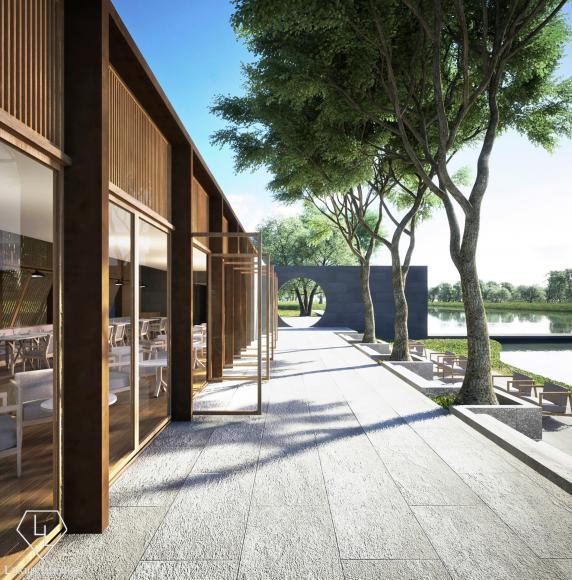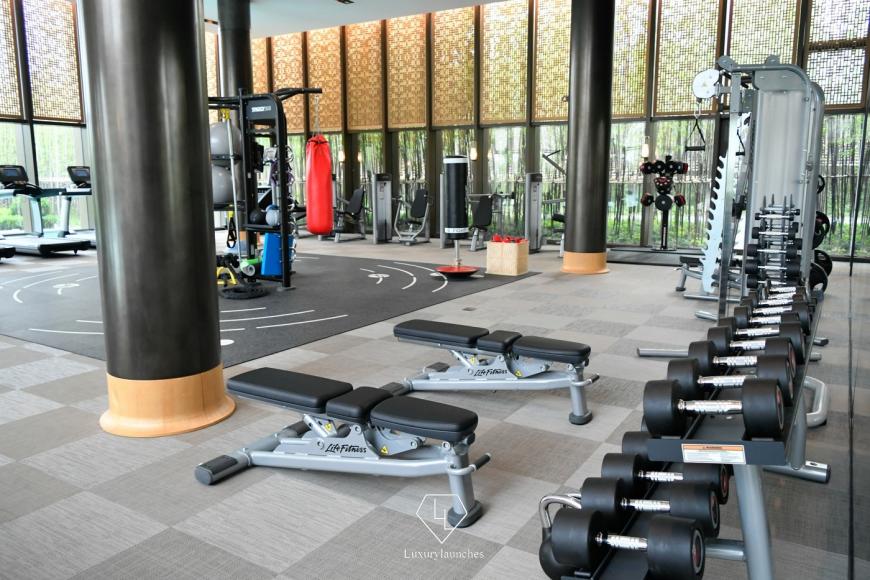It’s said that wealth preserved multiplies in value. The same goes for heritage. China, with its rich cultural reputation, is also one of the swiftest growing nations in the world in terms of infrastructure. Oftentimes, development and heritage lock horns and difficult decisions need to be made. On one such instance, in the early 2000s, the government had decided to construct a dam in the Jiangxi province. While it offered promise for a few settlers, it would also rain down doom on a forest of camphor trees, which was nearly a thousand years old. Enter Ma Dadong, an enterprising, young businessman, who belonged to the region and was well equipped with the resources to save the situation. At the age of 28, he made a deal with the government to relocate 10,000 trees and an adjoining 50 ancient villas to a safe harbor, over 700 kilometers away. A few years later he met Adrian Zecha, the founder of Aman, and today this beautiful traveling forest and its historical villas have come to be collectively known as Amanyangyun.

I wouldn’t have imagined it to have retained much of what the Qing and Ming dynasty had implanted in the original avatar but when you arrive at the Amanyangyun after a stunning hour’s drive from Pudong airport, I fully understood. The approach to the property isn’t anything like one would imagine, visiting a luxury resort. It’s like you’re shaking the dust of the city life away before you plunge into the tranquil embrace. Australian architect, Kerry Hill (behind Aman Tokyo and Amanemu), has done a fabulous job with the restoration of this property, which breathes in the air of contemporary while its pulse beats with the heritage of the time it belongs to. All, finely balanced out. Hill’s minimalist touches adorn both, the interior and exterior spaces here.

The ancient villas, which have withstood the test of time and relocation, are the prime dwelling spaces here. There are twenty-six in all and each of these villas has their very own self-contained complex. It’s more suited for a group of friends or a family. For those seeking smaller accommodations for a couple, there are one-bedroom courtyard suites to indulge in.
Take a closer look inside the Ming Deluxe Pavillion with the above video.
I was put up in the one-bedroom pavilion that offered ample privacy. Since this wasn’t my first Aman visit, I wasn’t surprised by the minimalistic design that the rooms offered. I had a large king-sized bed for the pair of us, a beautiful private courtyard, large and well-lit walk-in wardrobes, a massive bathtub and a large outdoor rain shower at my disposal. Every touch was classy, from the stonework in the bathroom to the fine furnishing. Aman hotels love blending their luxury treatments with the region’s natural indulgences. My pavilion was blessed with large windows that streamed in ample natural light. Not many establishments that tout the ‘modern’ tag would indulge their guests with a hearth, but I had my very own fireplace. The Internet connectivity here was efficient and quick. Since it was provided from a VPN, I could access a number of sites and social media websites, which are otherwise blocked by China’s infamous firewall.






All this exposure to nature and the ample walking you have to do to get around can sure cook up an appetite in you. Thankfully, the Amanyangyun is blessed with three restaurants, each with their own specialties on offer. My first meal was at Lazhu, which is inspired by local cuisines. You can enjoy spicy Chinese delicacies here including the famous grilled carp and pork belly. The vegetarian offerings here may not satisfy every palate through the artistry of Chef Steve Miao may surprise you. My favorite was the Italian restaurant, Arva, which served up farm fresh delicacies. This restaurant is a fine reflection of its twin at the Aman Venice. It’s located by the lake and serves food using the Italian share place concept under the watchful eyes of Chef Andrea Torre. I especially loved the Avocado Toast I munched on here during one of my breakfast fares. The third restaurant here is the Nama that serves Japan’s washoku traditional cuisines, courtesy Executive Chef Keiji Matoba.

Among my best moments at the Amanyangyun were the hours I spent at Nanshufang, the cultural heart of the property. Located at one of the most splendorous buildings within the confines of the restored village, here’s where learning and skill are celebrated and imparted. If you’re a history junkie then this could well be one of the main reasons you’d choose the Amanyangyun.

A total of nine private rooms here host tea and incense ceremonies of the nature you’ve never seen. A tea master will guide you in the preparation process of three of the finest Chinese teas as you learn about their origins. Calligraphy has been inspired by China and you can learn to use this beautiful art form and how it was used as a form of meditation in the Buddhist culture. You can walk away from here with your very own piece of work, which is quite fulfilling.

The incense rituals are as fascinating as they are alluring. The incense room and ritual is a treat to the senses. If you’re more artistically inclined then the Brush Paintings at the Nanshufang will keep you enthralled as you discover more about the ancient drawing techniques and the interpretations of color.

My favorite was discovering the secrets behind the seven-stringed guqin. Each note emanated from here was a direct attribution of the fine tastes of ancient Chinese musicians and their ability to manipulate notes to create surreal experiences.

Right at the entry of the Nanshufang is the Emperor Tree that stands 17-meters tall and has lived for over a thousand years. Watering it makes one feel truly special and connected to the land.
The 2800-square meter spa is absolutely unmissable. It offers everything from oxygen facials to private yoga lessons. There are a total of eight treatment rooms, two double spa suites, ample relaxation areas, a Jacuzzi, a sauna, plunge pool, and both, an indoor and outdoor pool. You could treat yourself to a Russian Banya or a Turkish Hammam treatment. A trained physician and qigong master tends to your needs through a combination of ancient techniques and modern healing methods. You can also access the usual cardio and strength training equipment present here.


A stay at the Amanyangyun widens your horizons to truly appreciate the historical and cultural richness that is just a stone’s throw away from the bustle of Shanghai. The tranquil surroundings, plush with greenery and the wealth of knowledge that is imparted from Nanshufang is all the memories one needs to plan their next visit here.
Where: Amanyangyun
6161 Yuanjiang Rd, Minhang Qu, China, 201111
Phone: +86 21 8011 9999

Note: The critic was invited by the hotel but all the opinions expressed herewith are his own


























